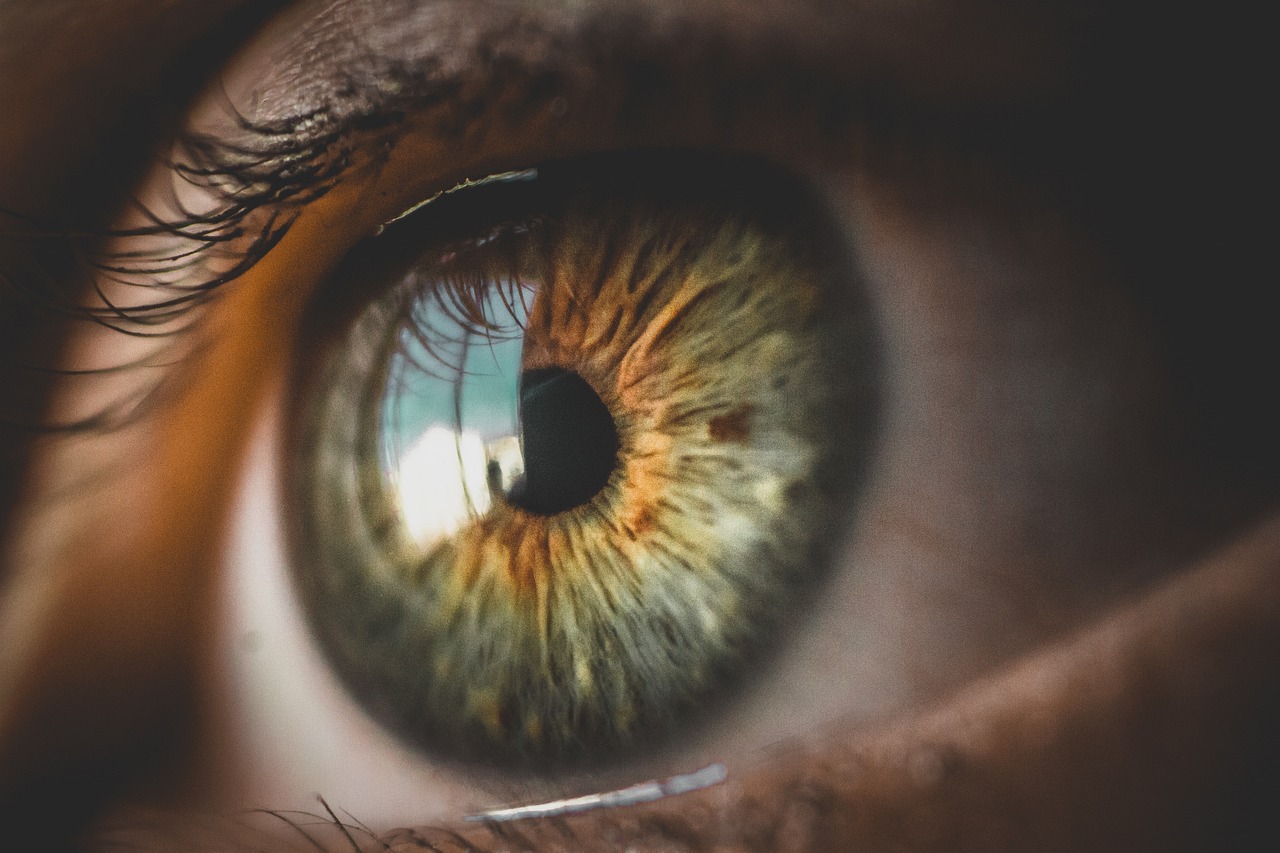Eye color is one of the most visually striking human features, and it can vary widely among individuals, from deep brown to bright blue, vibrant green, hazel, gray, and many shades in between. This diversity in eye color is a result of a complex interplay of genetics, environmental adaptation, and evolutionary factors. Far from being a simple trait, eye color is determined by multiple genes and involves sophisticated biological processes within the iris. Additionally, certain evolutionary pressures and genetic adaptations have led to a broader range of eye colors in humans, especially within populations of European descent.
Understanding why we have different eye colors requires examining both the genetics behind eye pigmentation and the evolutionary factors that have shaped this trait over time. By exploring how these genetic mechanisms function and how eye color distribution may have developed in response to environmental factors, we can gain deeper insight into the origins and significance of eye color variation.
The Basics of Eye Color: Melanin and the Structure of the Iris
The primary factor influencing eye color is melanin, a pigment also responsible for the color of hair and skin. Melanin is produced by cells called melanocytes within the stroma, the anterior layer of the iris. The more melanin present in the iris, the darker the eyes appear. Brown eyes, for instance, have a high concentration of melanin, while blue eyes have very little melanin. The concentration, type, and distribution of melanin in the iris determine not only the basic color of the eye but also variations within each color range.
Two types of melanin contribute to eye color:
- Eumelanin: A dark brown pigment responsible for brown and black colors.
- Pheomelanin: A yellowish pigment that contributes to lighter tones, seen in green and hazel eyes.
People with brown or black eyes typically have a high amount of eumelanin in the iris, which absorbs more light and gives the eyes their dark color. In contrast, people with blue or green eyes have lower levels of melanin, allowing light to scatter in the stroma layer, producing lighter colors through a phenomenon known as Rayleigh scattering. This scattering effect is similar to what makes the sky appear blue, as shorter wavelengths of light (like blue) are scattered more than longer wavelengths.
The Genetics of Eye Color: Multiple Genes, Complex Interactions
For many years, it was believed that eye color followed a simple Mendelian inheritance pattern, with brown being dominant over blue. However, modern genetics has shown that eye color is a polygenic trait, meaning it is influenced by multiple genes. There are over a dozen genes involved in determining eye color, but the two most influential are OCA2 and HERC2, both located on chromosome 15.
OCA2 and HERC2: Key Genes in Eye Color Determination
The OCA2 gene plays a significant role in controlling the amount of melanin in the iris by producing the P protein, which is involved in melanin synthesis. Variants within the OCA2 gene affect melanin production levels, leading to variations in eye color. For example, certain variants of the OCA2 gene are associated with reduced melanin, resulting in lighter eye colors like blue and green.
The HERC2 gene interacts closely with OCA2. It contains a regulatory region that influences OCA2’s activity, effectively controlling the production of melanin in the iris. A common variant in HERC2 can reduce the function of OCA2, leading to reduced melanin levels and resulting in blue eyes. This variant is particularly prevalent in people of European ancestry, where blue eyes are more common.
Additional Genes and Their Influence on Eye Color Variability
While OCA2 and HERC2 are the primary genes affecting eye color, other genes contribute to the subtle variations that give rise to shades like hazel, gray, and amber. These include TYR, SLC24A4, TYRP1, and IRF4, which influence melanin production and distribution. Each of these genes adds a small but essential influence to the overall phenotype, creating the broad spectrum of eye colors observed in humans.
The polygenic nature of eye color explains why two brown-eyed parents can have a blue-eyed child if they carry recessive variants associated with low melanin production. Similarly, individuals with rare combinations of these gene variants may exhibit unusual shades, such as green, hazel, or even gray, that do not fit neatly into the classic categories of eye color. The interplay of these multiple genes and their variants makes predicting eye color a complex process.
Why Did Eye Color Variation Evolve?
Eye color is not just a genetic accident; it has evolved over time and has been shaped by both natural selection and genetic drift. Eye color variation appears to have emerged relatively recently in human history, especially among populations of European descent. But why did this variation evolve, and what evolutionary pressures contributed to it?
Eye Color Variation and UV Exposure
One widely accepted theory is that natural selection played a role in the evolution of eye color variation as a response to environmental factors, specifically UV radiation exposure. Darker eye colors are more common in regions closer to the equator, where UV radiation levels are high. Brown or black eyes, which have high melanin content, are better protected against the harmful effects of UV radiation, as melanin absorbs and diffuses light, reducing the risk of UV-related eye damage.
In contrast, lighter eye colors, such as blue, green, and gray, are more common in populations from Northern Europe, where UV radiation levels are lower. Lighter eyes have less melanin, which allows more light to enter the eye and increases sensitivity to UV exposure. In lower UV environments, having less melanin in the iris would not pose as great a risk, allowing lighter eye colors to emerge and persist without negative consequences.
Sexual Selection and Eye Color
Another hypothesis for the evolution of eye color diversity is sexual selection. Sexual selection suggests that certain traits evolve because they are deemed attractive by potential mates, giving individuals with those traits a reproductive advantage. In populations where blue and green eyes are rare, these eye colors may have become more attractive due to their novelty, leading to a preference for lighter eyes.
In Northern European populations, where lighter eyes are more common, eye color variation might have been advantageous by signaling genetic diversity. Some researchers propose that the rarity of blue or green eyes made them more desirable and that these colors were passed down through generations due to mate selection preferences, similar to other traits like hair color.
Genetic Drift and Eye Color
Genetic drift—random changes in allele frequencies in small, isolated populations—may also have played a role in the development of eye color diversity. Northern Europe had small, relatively isolated populations thousands of years ago, which might have allowed certain genetic mutations associated with lighter eyes to become more prevalent by chance. Over time, these random changes in allele frequencies allowed blue and green eyes to become more common in these populations, contributing to the diversity of eye color.
Types of Eye Colors and Their Genetic Basis
Brown Eyes
Brown eyes are the most common eye color globally and are dominant in most populations, especially in regions with high UV exposure. The high concentration of eumelanin in brown eyes provides additional protection against sunlight, making it advantageous for people living in equatorial regions. The presence of high eumelanin levels in the iris results in dark eyes that absorb more light, which is useful in sunny climates.
Blue Eyes
Blue eyes are the result of very low melanin levels in the iris and are most commonly found in individuals of Northern European descent. Blue eyes emerged around 6,000 to 10,000 years ago due to a genetic mutation affecting the HERC2 gene, which inhibits melanin production in the iris. Instead of pigment, blue eyes result from light scattering within the stroma, giving them their characteristic color.
Green Eyes
Green eyes are among the rarest eye colors and are primarily found in populations of Celtic and Germanic ancestry. Green eyes have a moderate amount of melanin and a unique balance between eumelanin and pheomelanin. The yellowish tones from pheomelanin combine with the light-scattering effects, creating the green color. The specific genetic variants that lead to green eyes are less common globally, making them a rare trait.
Hazel Eyes
Hazel eyes are characterized by a combination of colors, usually green, brown, and sometimes amber tones, that vary in intensity based on lighting and angle. Hazel eyes result from a moderate level of melanin in the iris and uneven melanin distribution, creating a multicolored appearance. The mixture of pigments and melanin concentrations contributes to the distinct, often flecked look of hazel eyes.
Gray Eyes
Gray eyes are similar to blue eyes in that they result from low levels of melanin, but they have a denser layer of collagen in the stroma, which scatters light differently, creating a grayish hue. Gray eyes are extremely rare and are primarily found in individuals of Northern and Eastern European descent. The genetic basis of gray eyes is not fully understood but likely involves unique variations in the genes that control melanin distribution and light scattering.
Eye Color and Health Implications
While eye color itself does not determine health, some studies suggest that certain eye colors may have minor correlations with specific health risks due to differences in melanin levels:
- People with lighter eyes (blue, green, or gray) tend to be more sensitive to bright light and may have a slightly higher risk of developing age-related macular degeneration due to their lower melanin levels.
- People with darker eyes (brown or black) may be at a lower risk of UV damage but might have a slightly higher risk of developing cataracts later in life.
These correlations are not strongly predictive, but they do suggest that melanin’s role in eye color may have some protective effects.
Conclusion: Eye Color as a Reflection of Human Diversity and Adaptation
Eye color variation is a fascinating example of how genetics, environment, and evolutionary processes interact to create a trait that is both functional and aesthetically diverse. The differences in melanin concentration, gene interactions, and environmental factors have led to a range of eye colors that reflect human adaptation to various climates and environments. Eye color diversity, particularly in European populations, likely evolved as a result of both natural and sexual selection, driven by environmental pressures and human preferences.
The science of eye color reveals much about human genetics, the adaptability of our species, and the beauty of variation within populations. While the underlying mechanisms are complex, the result is a rich tapestry of eye colors that contribute to the unique identity of each individual, symbolizing the interplay of biology and evolution in shaping human appearance.




